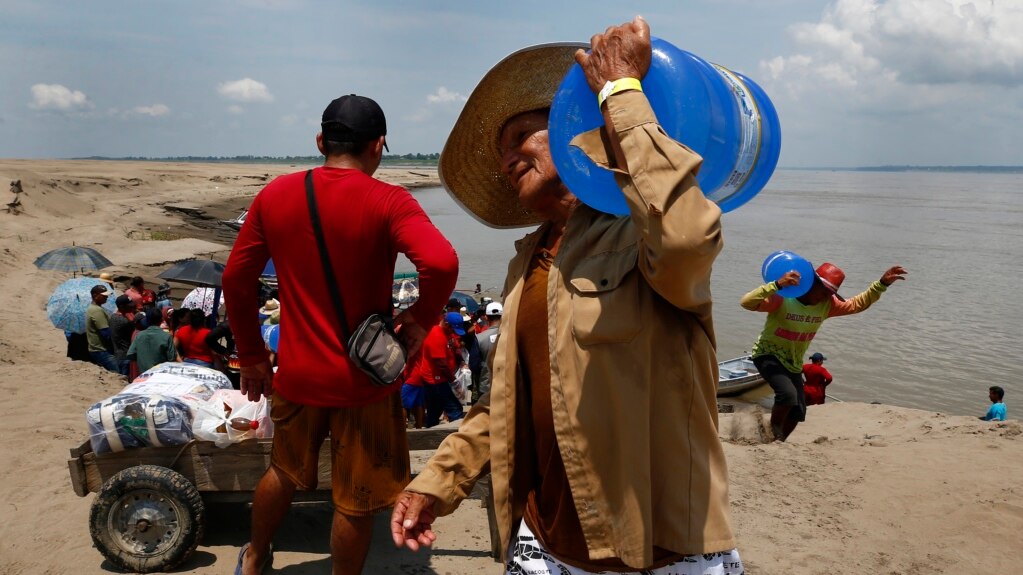A drought is endangering communities in the Amazon, a large rainforest in South America.
Public officials in Brazil are attempting to transport food and water to thousands of distant communities. The situation is more complex as the area has few roads. Boats are the main transportation to these communities.
Across the huge Amazonas state 59 out of its 62 municipalities are under a state of emergency. About 633,000 people are affected. In the capital Manaus, the large Negro river is at its lowest level since official measurements began 121 years ago. The Negro flows into the Amazon River.
The city of Careiro da Varzea is in great need. It lies by the Amazon River not far from Manaus. Recently, the municipality gave out emergency supplies. The city used a boat that normally transports farm animals.
The Associated Press joined on transport operations to two communities.
Each family received a basic food supply and 20 liters of water. It was enough for just a few days, but difficult to carry in the heat.
“I will have to carry the food package on my back for half an hour,” Moisés Batista de Souza told the AP. He owns a small farm in Sao Lazaro community. He said the biggest problem is getting drinkable water. He has to walk a long way for that, he says.
“Everybody in Careiro da Varzea has been affected by the drought,” said Jean Costa de Souza. He is chief of Civil Defense of Careiro da Varzea, a municipality of 19,600 people. Most of them live in rural areas.
“Unfortunately, people don’t have water. Some lost their crops, while others couldn’t transport their output,” he said.
Costa de Souza reported also that the municipality will complete the first transports to all rural communities next week. The local government is now planning two more transports. They are waiting for state and federal aid.
Periods of dry weather are part of the Amazon’s usual weather pattern. Lighter rainfall happens from May to October for most of the rainforest.
This year’s dry season is longer because of two different weather events: the warming of northern Equatorial Atlantic Ocean waters and El Niño. El Niño is the warming of surface waters in the Equatorial Pacific area. It will be at its strongest point between December and January.
I’m Gregory Stachel.

